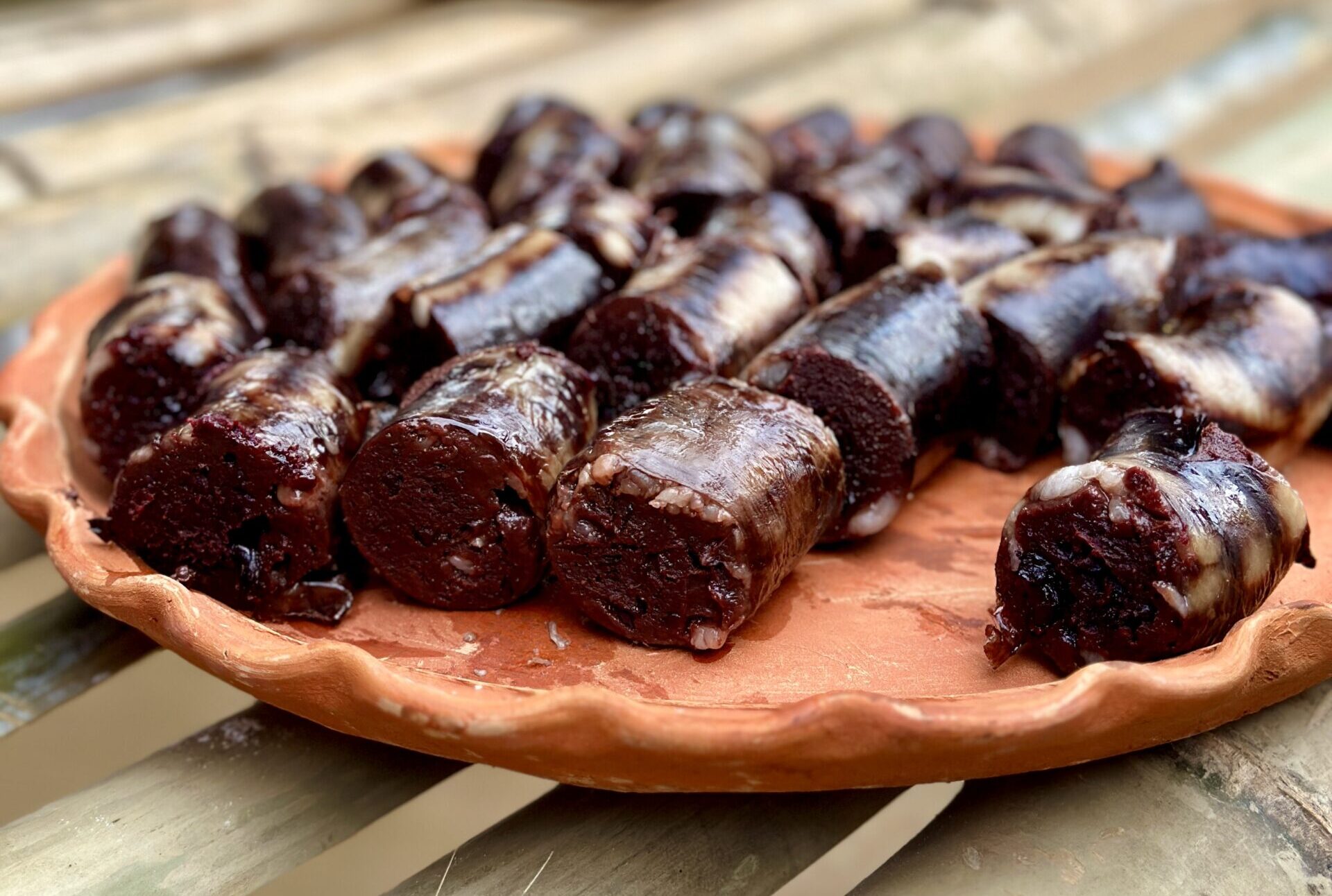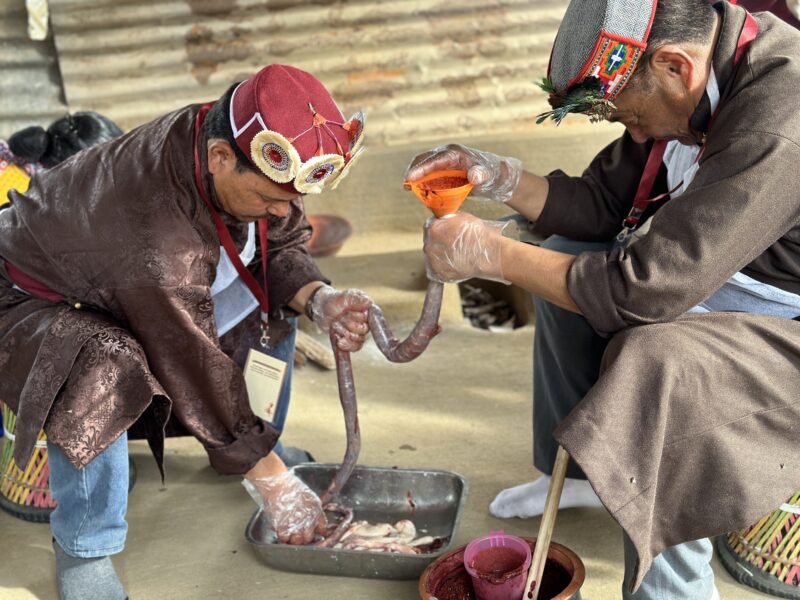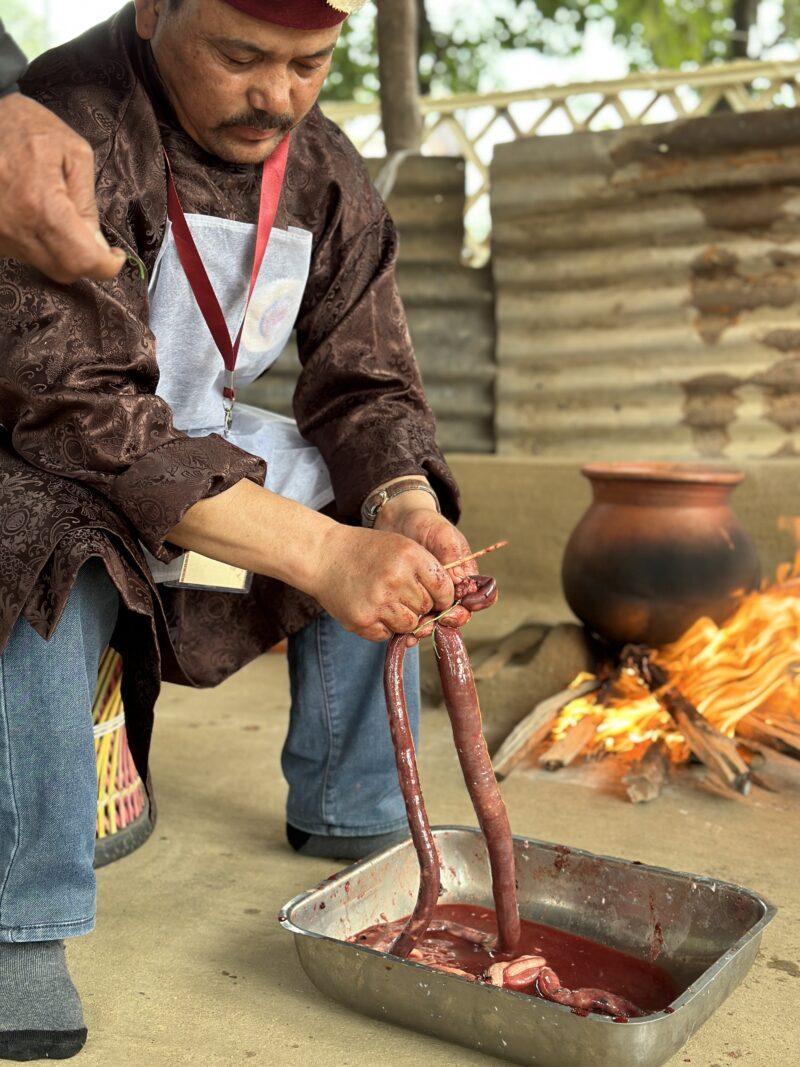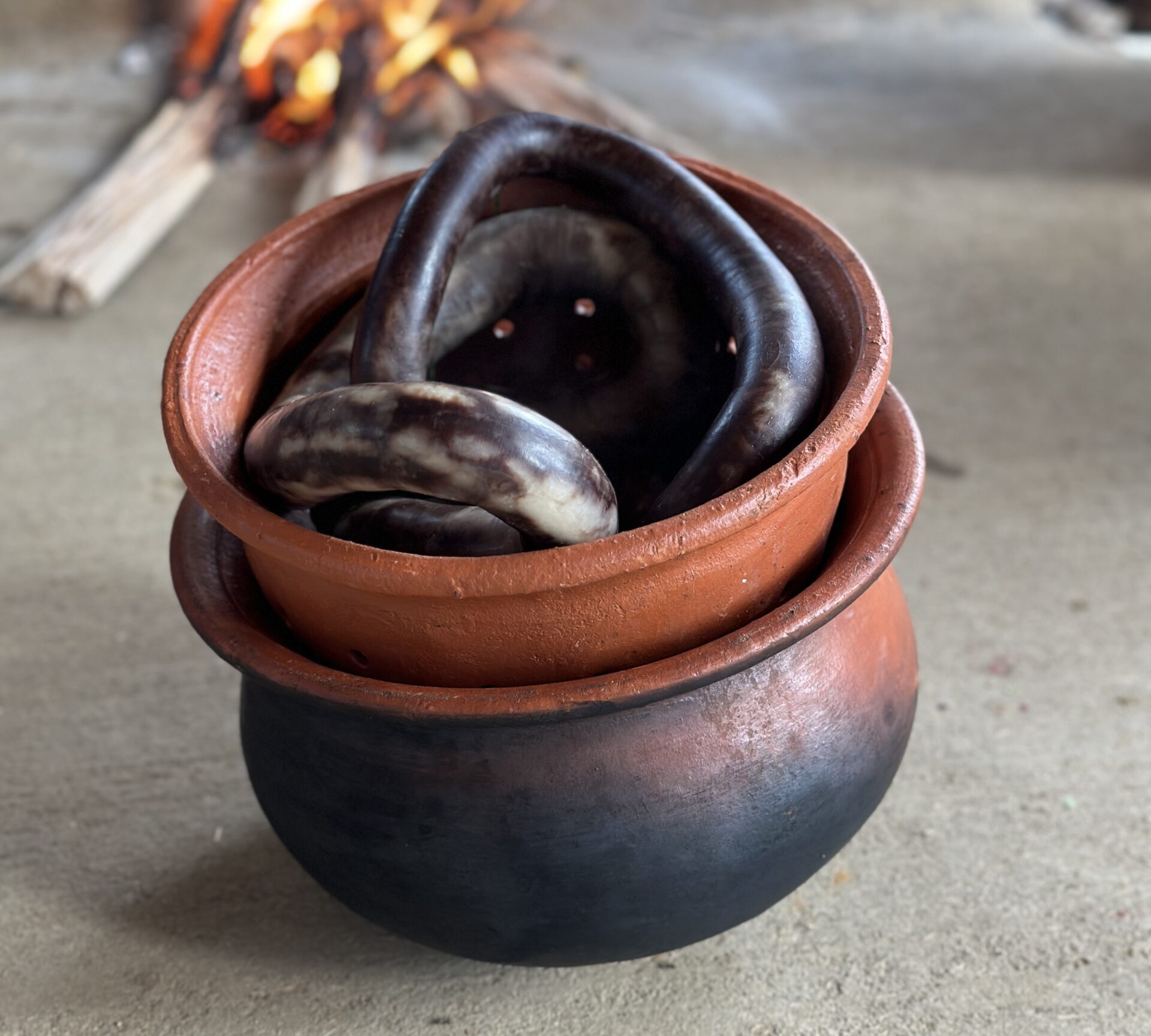
Blood sausages constitute a niche yet integral part of the local cuisine among communities across Himachal Pradesh. Usually prepared to signify an occasion such as a wedding or new year festivities, this dish can be made throughout the year, and predominantly when a sheep is bought for consumption by local families. On butchering the sheep, the sausages are the first item to be made, owing to the volatile nature of the blood. The blood can also be frozen for later use.
These sausages showcase the rich foraging culture of the region, with native spices such as masho (Himalayan wild spices) and a local variant of the kala jeera as fundamental flavourings. For Rigzin and Tenzin, the blood sausages are closely associated with memories of their respective fathers. While Rigzin distinctly remembers being served this delicacy by his father when he was young, Tenzin’s first recollection of blood sausages was learning to prepare the dish by watching his father do so.
What You Will Need
Meat grinder or food processor, mixing bowls, food-safe sanitiser or high-proof vodka, butcher’s twine, funnel, grease-proof paper, stock pot or any deep vessel.
Instructions
In a clean, sanitised bowl, soak the cleaned sheep’s intestines or natural sausage casing in water and 1-2 tablespoons of vodka until they are rehydrated (ideally overnight). The water should allow for complete submersion of the dry casings. Change the water after 5-6 hours, and add the vodka to it again,this helps in the sanitation process of the casings. Leave them in this solution until they are ready to be stuffed.
In a bowl, combine the sheep’s blood, atta, sooji, and the masho or thyme to create a homogenous mixture.
Grind the black cumin and coriander seeds along with some salt into a fine powder and add to the sausage mixture.
Combine the spice powder with the sausage mixture; use a meat grinder or a food processor to ensure that the mixture becomes a smooth paste.
Take care to ensure that all the fresh leaves, spices, and the coagulated parts of the blood are broken down into a fine paste as any sharp edge will tear through the sheep’s intestines.
Once the paste is ready, it can be stuffed into the intestine casing. The sausage mixture will have the consistency of a thick slurry, and will still be runny.
Use the sausage-filling attachment of the meat grinder to push the ground mixture into the casing. In case you do not have access to a meat grinder, you can fill the mixture into a piping bag using a round piping tip (size: 1A/2A) and a funnel.

Section off the stuffed casing using butcher’s twine to create the sausage links based on desired length.

In a stock pot, heat water until it just starts to boil. Steep the sausage links into the water, gently poaching them for around 15 minutes. This will allow the mixture inside to cook and fully thicken/ dry out.

Remove the sausage links and allow them to naturally cool to room temperature.
Store them in the refrigerator for at least 24-48 hours, following which the sausages are ready to be used. You can slice and fry the sausages to be eaten as a snack or an accompaniment to a meal.
Tips
- Ensure that the sausage mixture is smooth and devoid of any sharp edges. This will prevent the sausage casing from tearing while stuffing the mixture.
- While the sausages are good to use for about 10-15 days once refrigerated, they can also be frozen for long-term storage.
- Dried natural sausage casings are available for purchase online, or you can ask a butcher who sells sausages for more information on procuring the casings.
- Purchase of animal blood is not common in major cities, so it is essential to find a butcher who will be willing to help you procure it, as blood spoils very easily.
Variations
- Ingredients such as minced garlic, ginger, mushrooms, and other spices and herbs can be added to the mixture, to give the sausage a different flavour profile.
- Leftover meat cuts can also be added to the sausage mixture.
This recipe was documented by Chef Thomas Zacharias at the 10th edition of the Samvaad Tribal Conclave in 2023, hosted by the Tata Steel Foundation. Rigzin and Tenzin were present at the event as representatives of the Bodh community in Himachal Pradesh.
This recipe is a part of ‘A Longing for Home Food Booth’, an oral food memories project from The Locavore’s immersive installation at the Serendipity Arts Festival, 2023.
Listen to the complete memory of the recipe by visiting this link: Blood Sausages
You must be logged in to rate this recipe.

Sign in with email

